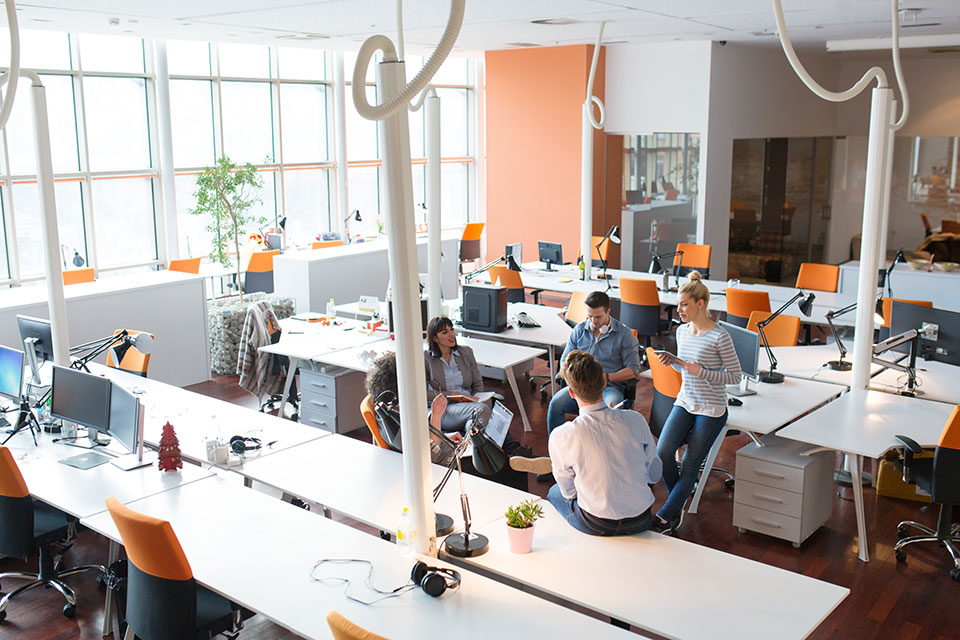Three Trends Driving the Future of DaaS

On January 1st, 2020, no one predicted that the word “unprecedented” would become a cliché description of all that the year would bring. Faced with an uncertain world, the options are to hunker down and refuse to look ahead or to consider how what has happened might influence what is to come. So, with a generous dose of humility, I choose the latter.
It makes perfect sense that the rapid, worldwide shift to remote work engendered a massive increase in cloud adoption, including Desktop-as-a-Service (DaaS), with ongoing increases through 2021. Here are a few predictions to consider regarding the future of cloud desktops and IT.
Remote work remains
The pandemic forced the hand of those who had been reluctant to allow employees to work remotely. This global remote work experiment proved that employees could, in fact, be at least as productive from home as they were in the office– if not more so. Further, CFOs realized that physical offices were expensive. Once the pandemic ends, most organizations will expect a larger percentage of their workforce to continue working remotely.
Moving to zero trust
Ongoing, large-scale remote work adds strain to the IT department that must support end-user computing. Security becomes even more critical, as a single unpatched PC can make an organization vulnerable to breaches – and patching them is more difficult when they are not connected to the corporate network. If anything, the pandemic spurred organizations to embrace Bring-Your-Own-Device (BYOD) for short-term productivity. Now, though, they are looking for zero-trust ways to ensure long-term secure access.
For example, I’m seeing more organizations that want to be able to use Chromebooks. If they are provisioning endpoints, they want the flexibility to be able to choose the best device for the job. There’s no-one-size-fits-all configuration, and companies want more flexibility in their choices. Cloud-based desktops can support all of these requirements.
Goodbye, data center
As more enterprise applications are being delivered as SaaS or being operated in the public cloud, the on-premises data center is no longer the hub. This trend has already begun and will continue through 2021. With fewer people in the office, the value of centralized data centers diminishes. It’s important to note that the farther away employees are from the data center, the poorer their user experience will be because latency will increase. Organizations will end the cost and complexity of owning on-prem data centers by embracing the agility and simplicity of cloud services.
With secure, long-term remote employee productivity as a goal, IT leaders are looking for cloud-based virtual desktop solutions. As complex data center infrastructure approaches renewal or hardware refresh, IT leaders will consider the value of moving applications and data to the cloud to eliminate or diminish latency. Other advantages include pricing, easy scalability, better security and more.
Multi-cloud momentum
One of this year’s winners has to be multi-cloud, and I anticipate its continued growth. It used to be that many customers were locked into whatever cloud the SaaS solution they selected was using. But now, the customer picks their universe (i.e., Google, Microsoft, Amazon, etc.) first and then chooses their solutions based on the universe. And that makes it ever more important for vendors to support more than one cloud. For example, 81% of respondents to a recent Gartner survey are working with two or more cloud providers. Organizations want choices and the freedom to pick the cloud and services that works best for them – which means SaaS vendors need to be flexible and offer support for multi-cloud.
On the horizon
Separately, these trends increase the viability and usability of cloud desktops. As a whole, they will transform the user experience. Cloud desktops reduce latency, increase productivity and significantly improve security. Organizations will enjoy greater flexibility as they adopt a multi-cloud strategy to accommodate their specific needs. These trends will continue to improve the way people work, while at the same time demonstrating the business value of DaaS. The shift to cloud desktops will prove a boon to the IT department, as well. There are no guarantees in life, but based on what I’ve seen this year, 2021 looks like a good year for DaaS and cloud desktops.
Written by Amitabh Sinha. Have you read?
World’s Richest Race Car Drivers, Richest Musicians, and Richest Rappers.
Add CEOWORLD magazine to your Google News feed.
Follow CEOWORLD magazine headlines on: Google News, LinkedIn, Twitter, and Facebook.
This report/news/ranking/statistics has been prepared only for general guidance on matters of interest and does not constitute professional advice. You should not act upon the information contained in this publication without obtaining specific professional advice. No representation or warranty (express or implied) is given as to the accuracy or completeness of the information contained in this publication, and, to the extent permitted by law, CEOWORLD magazine does not accept or assume any liability, responsibility or duty of care for any consequences of you or anyone else acting, or refraining to act, in reliance on the information contained in this publication or for any decision based on it.
Copyright 2024 The CEOWORLD magazine. All rights reserved. This material (and any extract from it) must not be copied, redistributed or placed on any website, without CEOWORLD magazine' prior written consent. For media queries, please contact: info@ceoworld.biz
SUBSCRIBE NEWSLETTER








